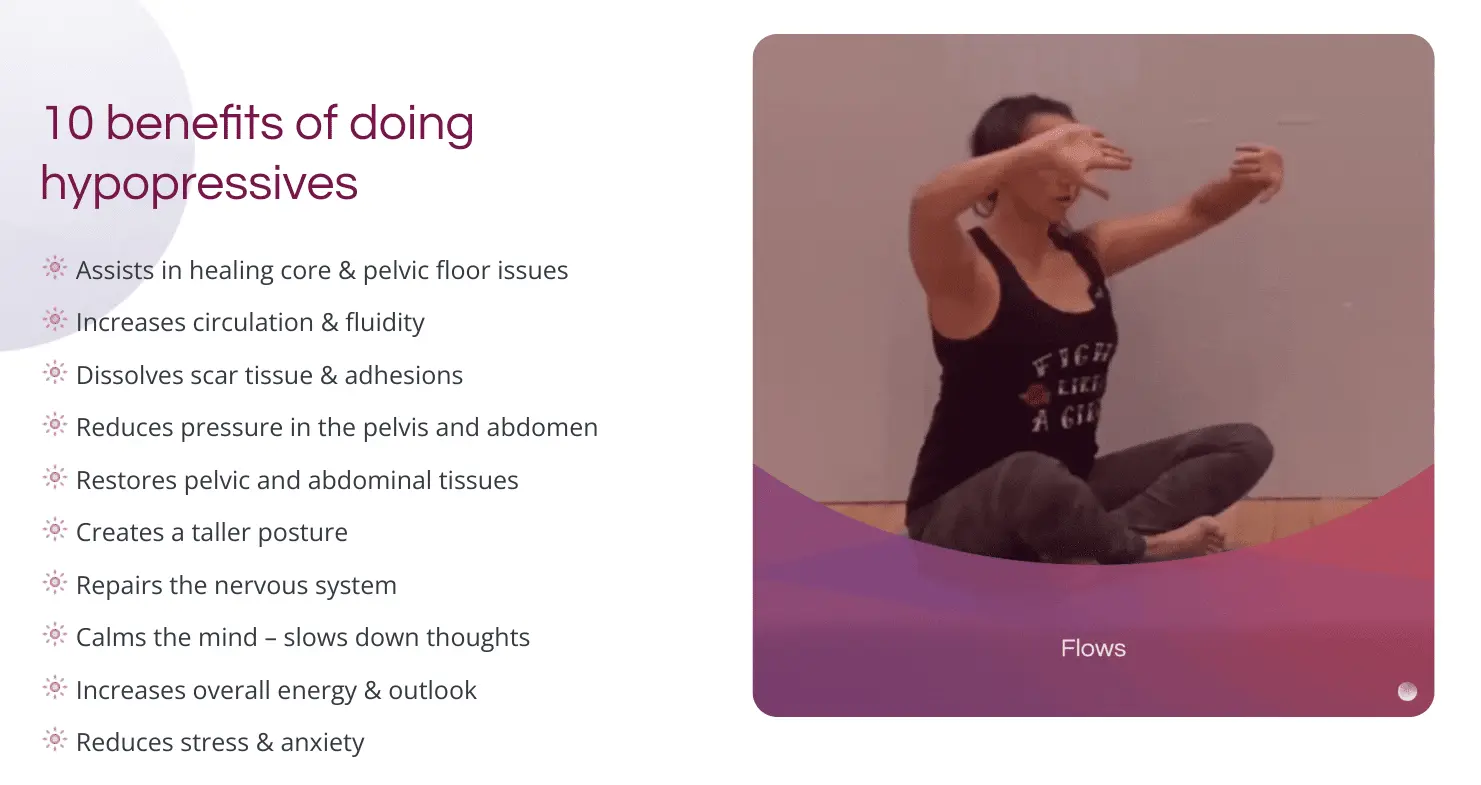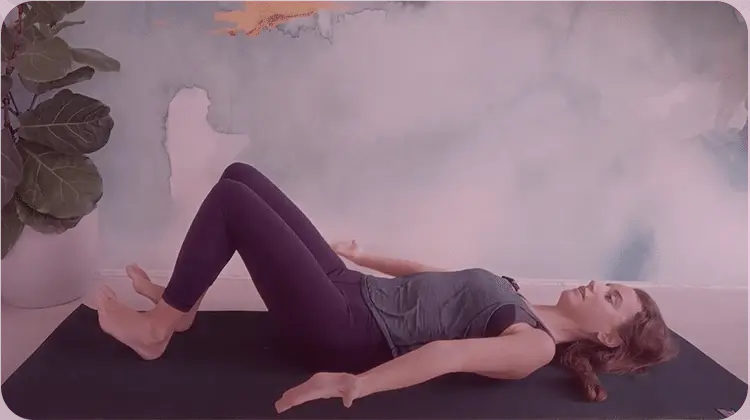Diastasis Recti Before and After Without Surgery: All You Need to Know
- August 4, 2022
- Diastasis Recti
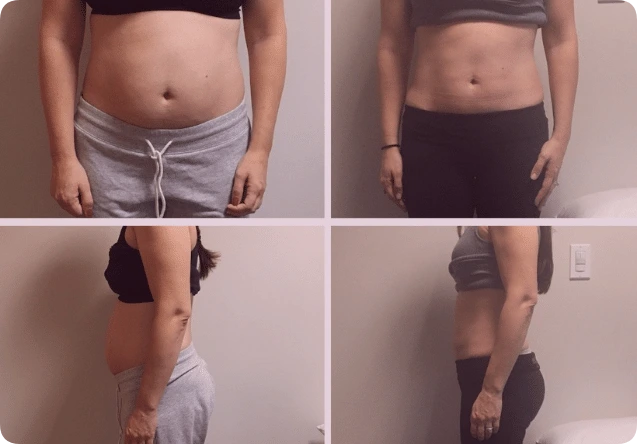
5-finger separation after 2 pregnancies, age 29
The greatest issue with Diastasis Recti is not the diastasis recti itself. Instead, it’s the fact that a great number of women believe they are stuck with it. They don’t think that they can improve diastasis recti before and after results without surgery.
Plenty of conventional medicine doctors would nod in agreement confirming this belief. Unfortunately, this tends to be the case with many women’s health issues, especially if they have anything to do with pelvic health and postpartum recovery.
While surgery to repair Diastasis Recti is indeed an option, it’s not the only option, and it’s also not the best option you have available. It’s absolutely possible to heal naturally, and we’ll get to that part soon.
First, though, let’s understand what Diastasis Recti is and why it happens. Then, we’ll explore what options you have.
What is Diastasis Recti?
Diastasis Recti or abdominal separation is a health condition that most commonly occurs in women who’ve been pregnant and given birth.
As a baby grows, the uterus presses against the abdominal muscles and tissues, gradually widening the gap between them.
The gap between your abdominal muscles consists of connective tissues known as linea alba. This connective tissue will get stretched when a woman is pregnant. Once the baby is born there is no longer lots of internal pressure on your abdominal muscles and tissues.
For women with Diastasis Recti, the linea alba does not regain its pre-pregnancy state.
As a result, your stomach may look and feel soft and squishy years after giving birth.
Abdominal separation loves company. So, women with Diastasis Recti don’t only look different before and after pregnancy but are also prone to experiencing other issues and health concerns such as:
• Lower back pain,
• Pelvic or hip pain,
• Painful sex,
• Incontinence,
• Constipation,
• Postural issues,
• Increased risk of developing an abdominal hernia,
• Pelvic organ prolapse,
• Difficulty lifting heavy objects (and babies),
• And more.
Not to mention that your confidence is also likely to take a significant hit.
You may not know it, but studies indicate that as many as 68% of women postpartum suffer from Diastasis Recti. This means that more than 1 in 2 women who’ve been pregnant will have some degree of abdominal separation!
Do I Have Diastasis Recti?
There is a simple test you can do to check if you have Diastasis Recti and in takes less than a minute. Here’s how you do it:
1. Lay down on your back on a flat surface such as the floor with your knees bent and feet flat.
2. Lift only your head off the floor. You can use one of your hands as support.
3. Place your fingers onto your belly with your fingernails pointing toward your knees.
4. Feel the gap between the two sides of your abdominal muscles.
Pro tip: “Coning” or “doming” when you engage your abdominal muscles basically means that there is too much pressure on your connective tissues and your abdominals aren’t engaging properly. To avoid it, don’t crunch to get up and down. Roll onto your side and use your hands to lay down and get up.
Abdominal separation can look different for each woman. It can occur:
• Throughout the entire length of the linea alba,
• Only around the belly button,
• Above the belly button, or
• Below the belly button.
Once you feel the gap, test how many fingers fit inside it:
1. One finger: This is typically considered normal.
2. One to two fingers: You’re borderline.
3. Two to three fingers: Mild diastasis.
4. Four or more fingers: Your abdominal separation is severe.
If the gap between the abdominal muscles feels soft and squishy and your fingers sink deep, your linea alba has been compromised. So, it can take more time to heal. (Which you can! And naturally!)
Diastasis Recti Before and After: Should You Take the Surgery Route?
Diastasis Recti surgery, tummy tuck, or abdominoplasty is a cosmetic procedure. Its purpose is to repair diastasis recti after pregnancy to make your tummy look like it used to before.
It’s a rather severe and invasive medical procedure that requires a general anesthetic. It involves stitches that pull abdominal muscles together for Diastasis Repair and creates scar tissue. For women with less severe diastasis recti, it may only require one or a few small incisions along with minimal skin removal.
The doctor will then perform laparoscopic surgery which means using a camera to execute the procedure. However, in more severe cases, women may need several larger incisions, significant skin removal, liposuction, hernia repair, and even a belly button relocation.
Some women opt for Diastasis Recti repair surgery based on their doctor’s recommendation, but they aren’t made aware of the other options that exist.
Diastasis Recti Before and After Repair Surgery: Downsides and Complication
Diastasis Recti repair surgery works for some women to get their desired before and after results. There are, however, several downsides to it:
• It’s expensive. While prices vary depending on each country, facility, and surgeon, expect it to be around $5,000 – $20,000 or even more. And this is just the procedure alone. You also need to factor in the cost of medicine and other medical equipment you may need. And, since it’s classified as a cosmetic and elective procedure, your insurance company may choose not to cover it.
• There can be side effects like incontinence, prolapse, other pelvic floor dysfunctions, low back pain etc.
• You should only perform Diastasis Recti surgery after you’re done having babies. You should also watch your diet. Subsequent pregnancies, as well as weight gain, will absolutely affect its result.
• There may be complications such as wound infections, reopening of the incisions, swelling that doesn’t go away with time, lasting pain, asymmetrical belly, numbness around the incision spot, or more.
• You will have scarring. While scar tissue covers the wounds, it is not as elastic as regular tissue. In addition to muscle, the doctor will also cut fascia, the connective tissues that enclose muscles. Fascia can heal, but it won’t regrow in the exact same way it used to be before. This can lead to restrictions in flexibility and movement as well as lasting chronic pain.
And most importantly, abdominal separation repair surgery alone is unlikely to be enough. It does not fix weak core and pelvic floor dysfunction which often go hand-in-hand with Diastasis Recti. You may feel less discomfort, but your pelvic floor issues won’t disappear. Therefore, you are likely going to need to supplement surgery with other healing methods such as physical therapy, exercise, and diet change.
Repair Diastasis Recti Before and After Without Surgery: Is It Possible?
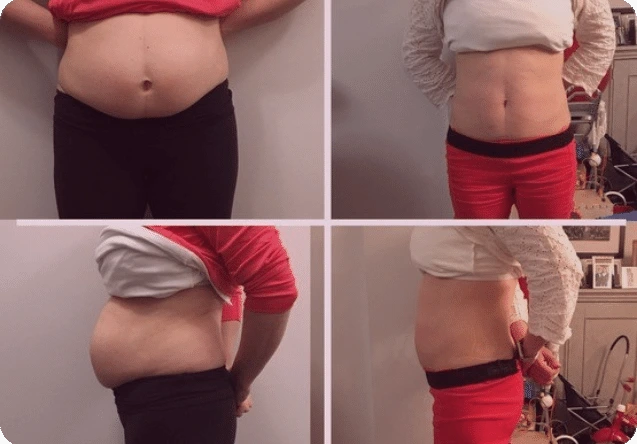
6-finger separation after 2 pregnancies, age 34
In the medical world, diastasis recti isn’t well understood, especially because gynecology and obstetrics have been traditionally male-dominant fields of medicine.
Moreover, in a great number of cases, Diastasis Recti isn’t the only health concern postpartum women have. Therefore, there may still be bulging, back pain, and other issues after diastasis recti repair surgery. More often than not, healing abdominal separation requires a holistic approach and a combination of several methods.
So, what are your Diastasis Recti before and after repair options without surgery? Here are a few:
1. Physical Therapy
Working with a physical therapist, specifically one specializing in pelvic floor health, will help you identify underlying concerns that may be exacerbating the symptoms. You will also receive a personalized exercise routine that will help you improve Diastasis Recti before and after results without surgery.[4] [5] [6]
2. Hypopressives
The hypopressive method involves a series of posture, exercises, and breathing techniques that focus on reducing intra abdominal pressure. As a result, it helps relieve pain and discomfort and gently trains the abdominal and pelvic muscles to engage and relax in the way they are designed to.
3. Improving Posture and Breathing
How you breathe, walk, stand, and sit all affect an abdominal separation. Therefore, adjustments to your posture and improving the way you breathe can help to correctly recruit core and glute muscles and build the strength necessary to relieve symptoms.
4. Diet and Lifestyle Adjustments
Habits such as smoking are associated with weaker connective tissues and more severe Diastasis Recti. Meanwhile, a balanced diet rich in fiber and the intake of probiotics can help ease constipation and reduce the stress placed on the pelvic floor. Bone broth and collagen supplements can aid recovery by providing the nutrients necessary for tissues to heal.
5. Mind over medicine
There are many different ways to work with your emotions and your mind …
And there’s a lot more.

9-finger separation after having twins, age 40
So, you can absolutely heal Diastasis Recti – a before and after version of you without surgery IS possible! even if the abdominal separation is severe. And there’s no expiry date on the healing journey. Even if you’ve lived with Diastasis Recti for years, you still have the opportunity to heal naturally.
There’s a “but,” though…
It needs time, dedication, and the right guidance.
If you found this post helpful and it gave you hope, we can help you.
MoonRise: Your Guide to Repairing Diastasis Before and After without Surgery
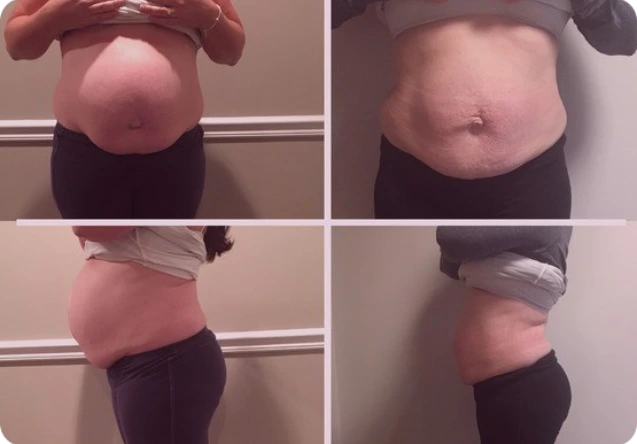
10-finger separation after 4 pregnancies, age 36
MoonRise is a women’s health coaching platform offering programs designed by women for women to heal naturally.
Our Hypopressives involves 100% natural, safe, scientifically proven, and effective methods and is built to meet your specific needs.
You’ll build healthy habits, gain priceless knowledge, get guidance from our skilled coaches, and more. 90% of our customers see significant results after 12 weeks. Could you be next?
For an overview of the Hypopressives Program and how it works, click here.
We’d love to be a part of your diastasis before and after repair journey.[8] [9]
Blog posts you might like:



